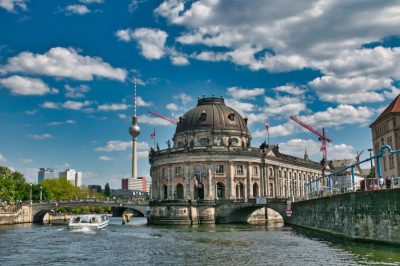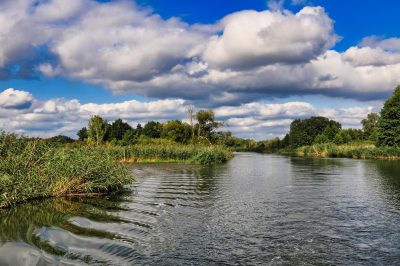Potsdam: Berlin’s little sister – some might think. But even though Berlin is only an S-Bahn ride away, the vibe in Potsdam is completely different. The city is a beautiful gem, with UNESCO World Heritage Sites, many parks and all kinds of interesting Potsdam sights. Reason enough to take a closer look!
Castles in Potsdam – sights with splendour
There are a total of 16 castles in the city of the Prussian kings. Quite a few of them are real highlights among the Potsdam sights. You can also see from the palaces how different the tastes of the Prussian rulers were. The spectrum ranges from ostentatious to almost filigree.

Sanssouci Palace – Retreat for the Old Fritz
What would Potsdam be without Sanssouci Palace? The UNESCO World Heritage Site is one of the most famous sights in eastern Germany and attracts millions of visitors every year.
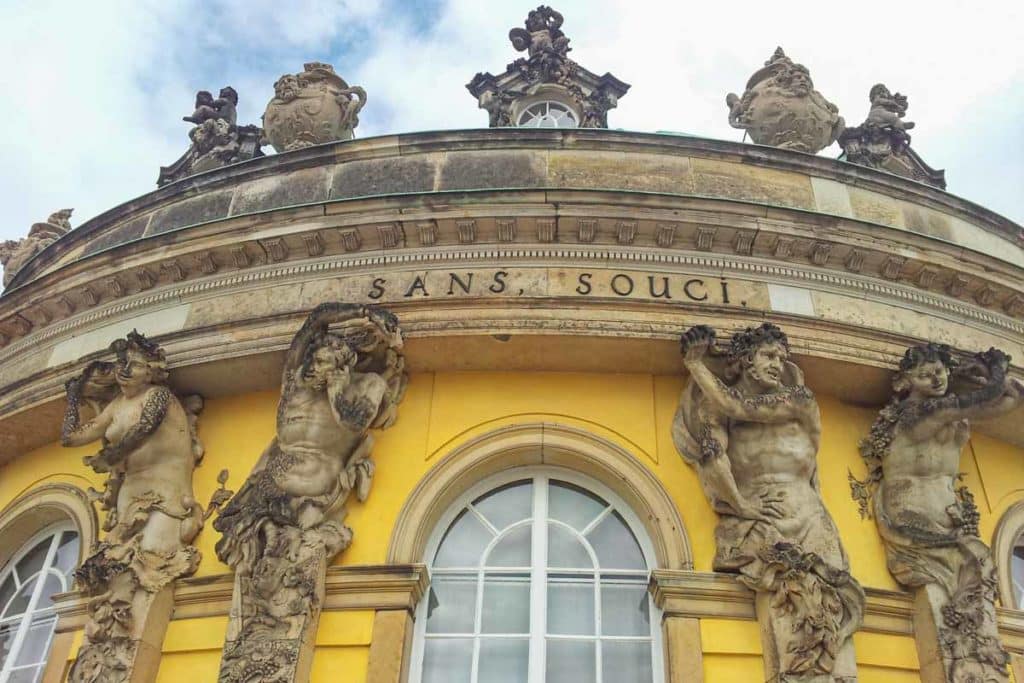
Sanssouci Palace
Without worries – sans souci – this is how Frederick the Great had imagined his palace. And indeed, he preferred to spend his time here. In the palace, built between 1745 and 1747, he stayed with his dogs and relaxed from the noise of his time, as contemporary visitors reported. The rococo ensemble is a beautiful composition and, especially with Sanssouci Park, an absolute must when visiting Potsdam. On a guided tour of Sanssouci Palace or the New Palace, which you’d better book months in advance, you can learn a lot about the mind of Old Fritz and his surroundings. Obscure society back then – I can tell you that much.
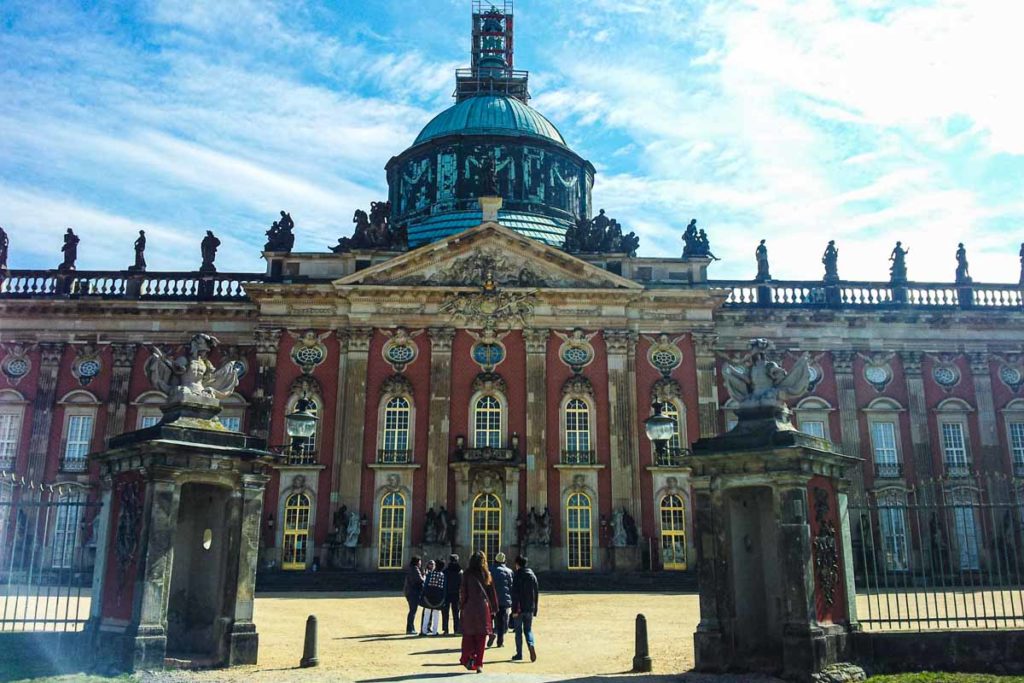
New Palace
Frederick the Great received his guests in the New Palace. He himself very rarely spent the nights in the palace, which was built from 1763 to 1769. But the rooms of the New Palace that can be visited give an impression of how sumptuously guests once stayed here. Other crowned heads did, however, enjoy the amenities. That’s why you can even admire the bathtubs of the emperors and their wives in the New Palace. The best technology of its time – imported from England.
Sanssouci Park
The terraces of Sanssouci Palace Park with the rococo palace at the top are probably among the most photographed objects in Germany. Frederick even had wine grown here. The 300-hectare garden is maintained by the Prussian Palaces and Gardens Foundation. Admission to the park is free. Only admission to the palaces costs money.
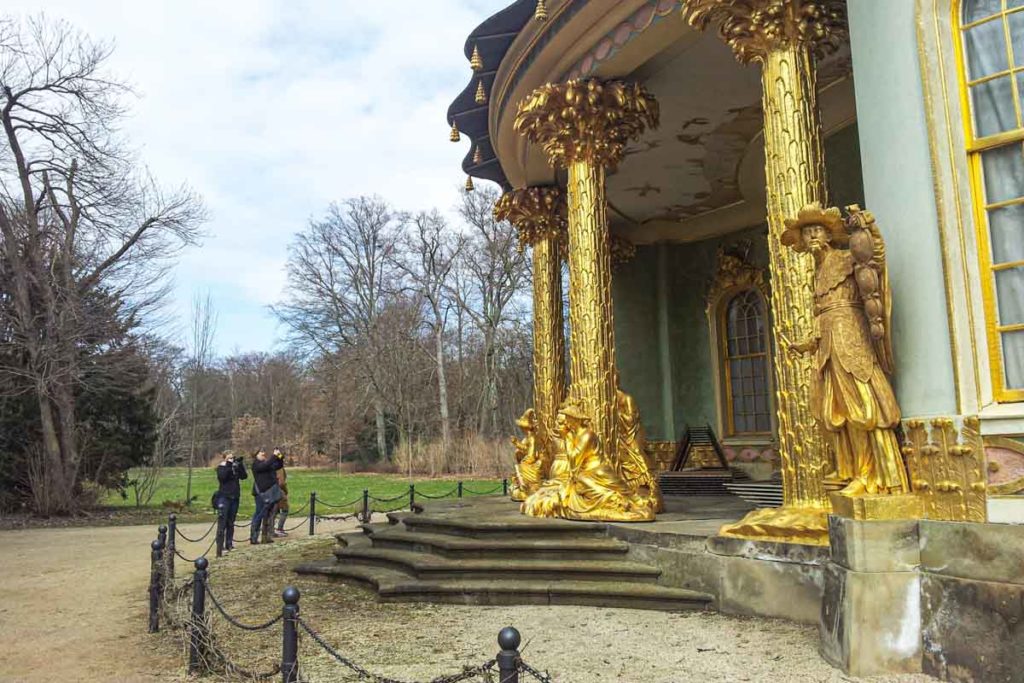
Chinese House
In the 18th century, rich aristocrats and citizens all over Europe had developed a soft spot for China. Chinese houses, tea houses and temple imitations were therefore built everywhere. Many of them in the style of what they considered Chinese. The Chinese House in Sanssouci Park depicts Chinese tea drinkers and musicians. It’s wonderful to imagine as a backdrop for a nice tea party.
Dutch mill
Even in the time of Frederick the Great, the mill in Sanssouci Park ground grain. However, according to legend, it was not to his delight because of the noise. But Frederick did not want to sue the miller and so it continued to grind. In 1787, Frederick William II even converted it into a Dutch mill. It burnt down during the Second World War, but was rebuilt by 1993 and now grinds grain again. It is undoubtedly one of the most beautiful photo motifs of the Potsdam sights.
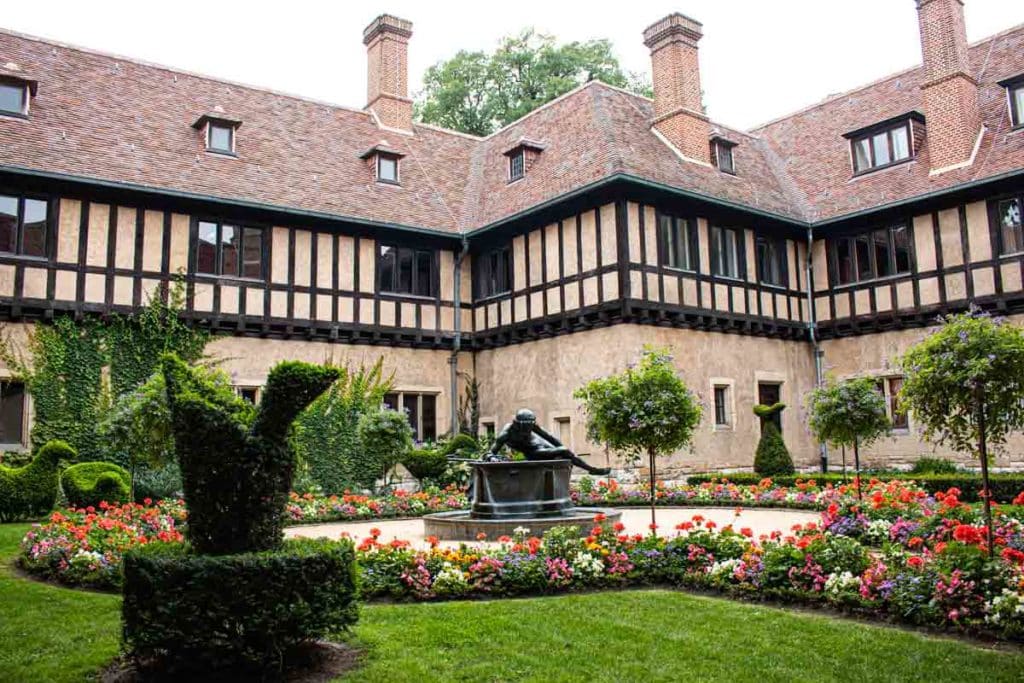
Cecilienhof Palace
A huge red star made of flowers used to adorn the front garden at Cecilienhof Palace. Soviet soldiers had planted it here in 1945. The Prussian nobility’s hair must still stand on end when they see it, because Cecilienhof was actually built in the middle of the First World War by Emperor Wilhelm II for his son Crown Prince Wilhelm and his wife Cecilie. They were not allowed to live in the 180 rooms for long. And the estate is better known today because it served as the venue for the Potsdam Conference, where Stalin, Truman and Churchill settled the post-war order. Photos of them have been taken in the courtyard of the palace and the conference hall has been preserved in its original state and can be visited.
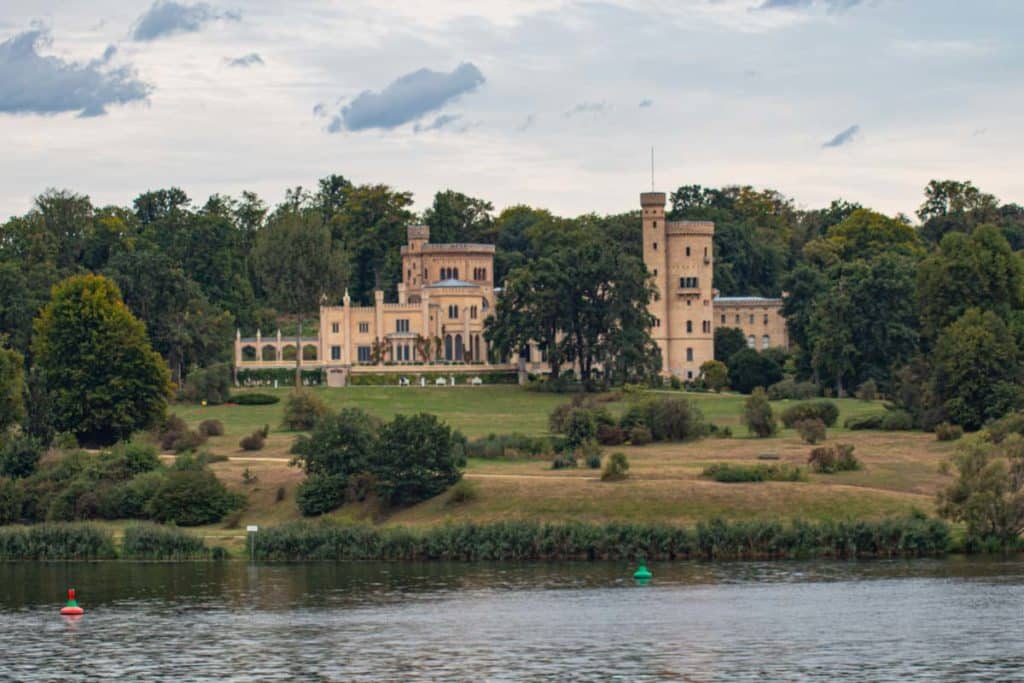
Babelsberg Palace
Babelsberg Palace is undoubtedly one of the most impressive palaces in Brandenburg. And it wasn’t even built for Frederick the Great. It was built from 1833 onwards for the then Crown Prince Wilhelm and Augusta of Saxony-Weimar. The first designs were by Karl Friedrich Schinkel. Even as king, and later as German emperor, Wilhelm and his wife continued to expand the palace until it reached its current splendour.
Belvedere on the Pfingstberg
Even though it’s not really a palace and none of the Prussian nobles lived here, the Belvedere on the Pfingstberg mountain is one of Potsdam’s most beautiful sights. From here you have a magnificent view of the city. And the building itself is also a great photo motif.
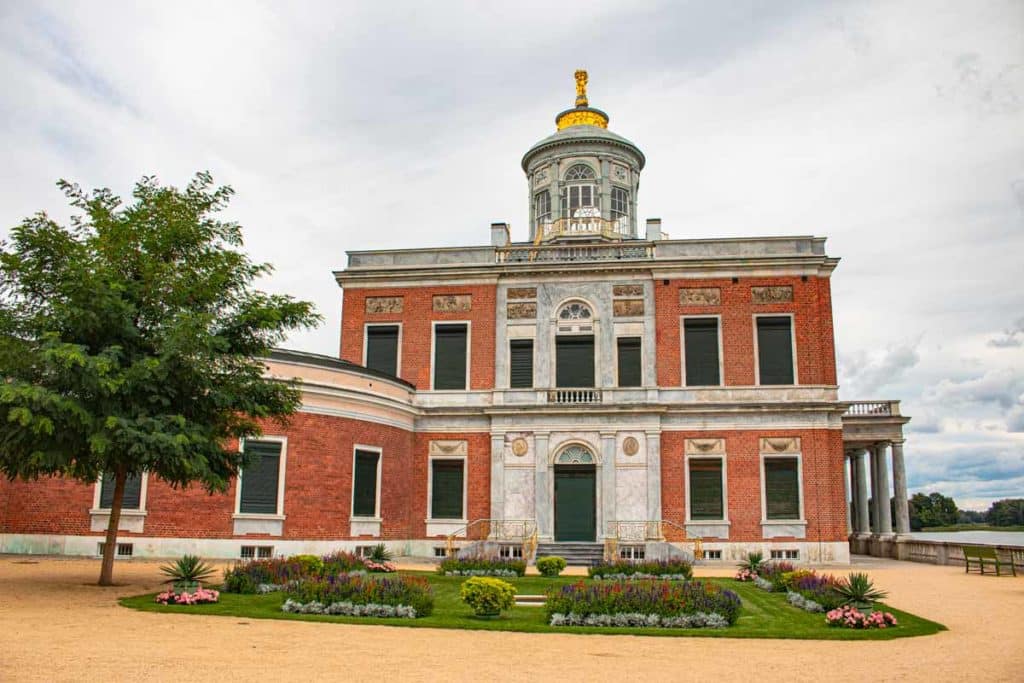
Marble Palace
The early classicist marble palace (Marmorpalais in German) is particularly beautiful on the shore of the so called Holy Lake. Like Sanssouci, the summer residence of King Frederick William II was a place of relaxation. It was built by the architect who also created the Brandenburg Gate in Berlin with its quadriga – Carl Gotthard Langhans. The rooms of the house can still be seen almost in their original state in the style of the time.
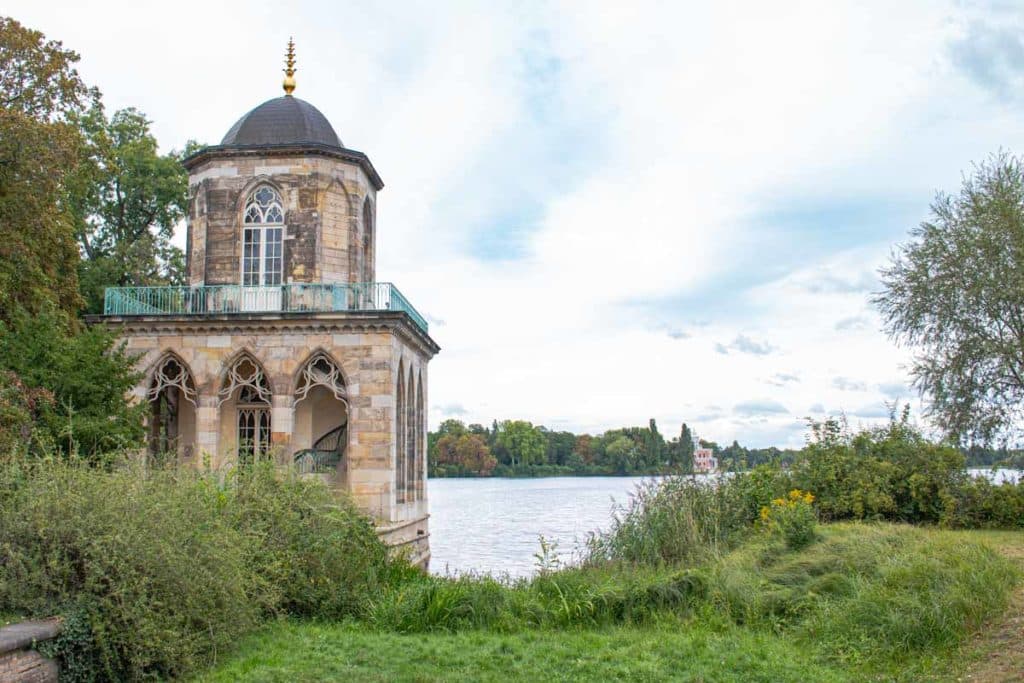
Gothic library
Langhans also built a special gem very close to the Marble Palace: the Gothic Library. Constructed between 1792 and 1794, it actually served as a library until the Second World War, but was damaged during an air raid and was almost lost. After reunification, however, the state of Brandenburg fortunately decided to save it and the building was first completely demolished and then rebuilt. The library is mostly closed, but it still makes a nice subject for any photo.

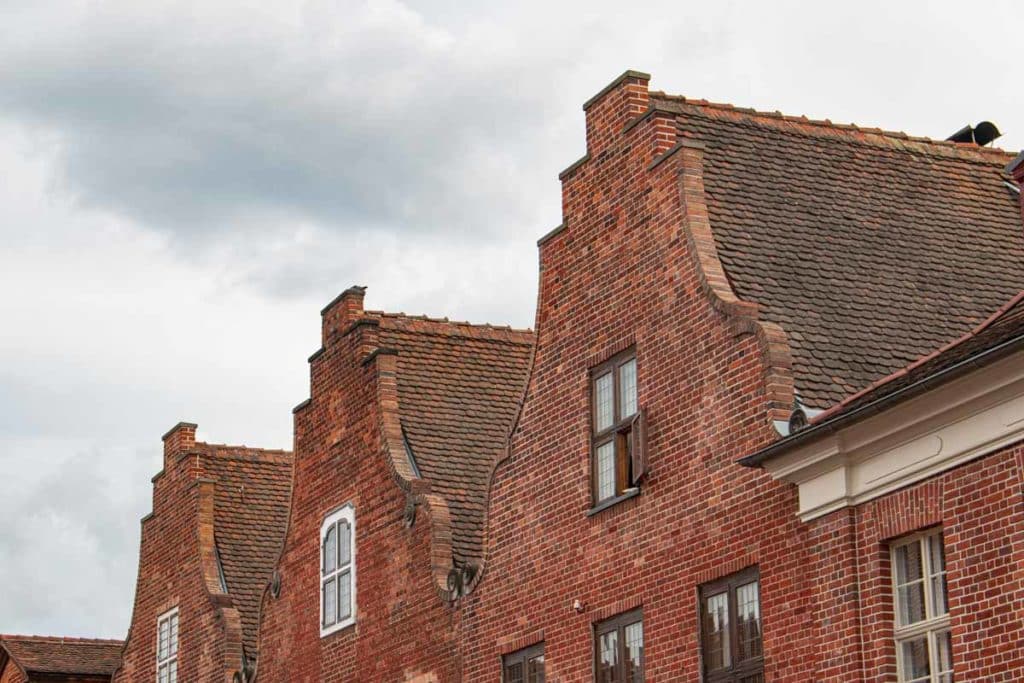



Dutch Quarter – Walk through Little Amsterdam
And not only the mill looks like the Netherlands. The Dutch Quarter could easily pass for Little Amsterdam and was indeed inhabited by Dutch people. They were given privileges and, under Frederick the Great, were expected to erect new buildings and advance crafts. At the time, the Netherlands were considered a leader in many fields. With its red brick architecture, the Dutch Quarter is a reminder of this episode in Potsdam’s history. Today, the so called Holländisches Viertel is a cosy neighbourhood with many small shops, cafés and pubs.
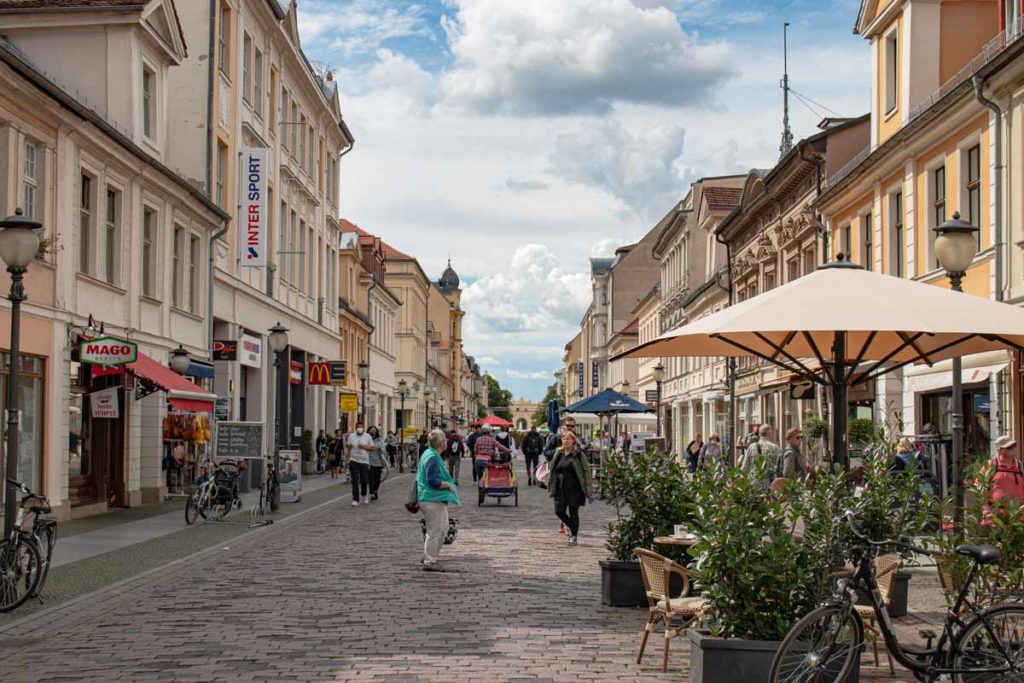

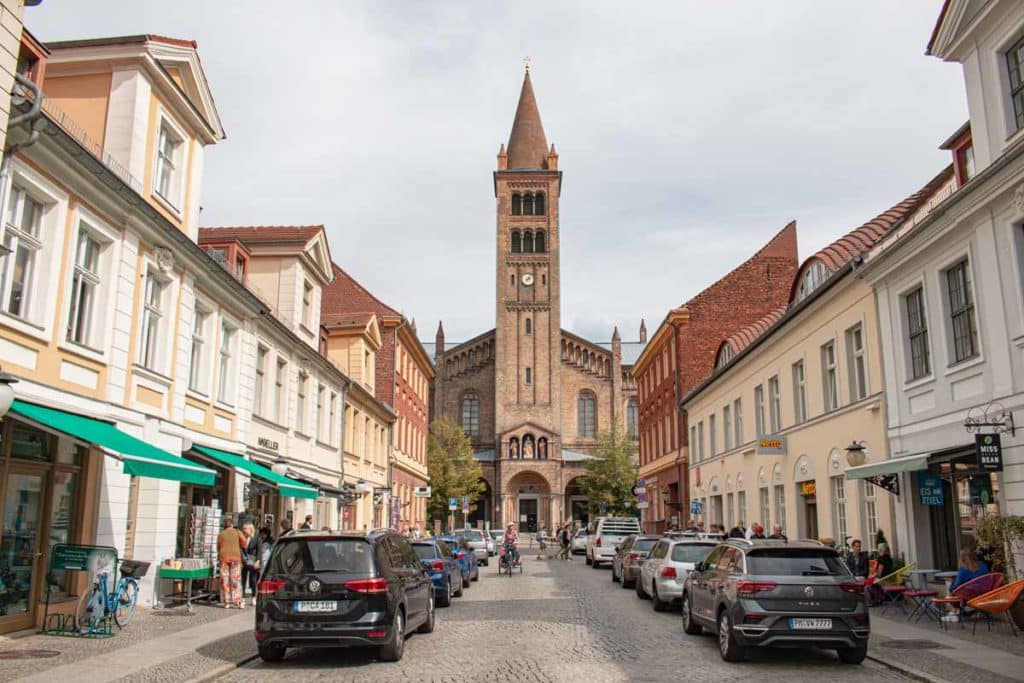
The old town – Exceptionally beautiful in the evening
The best time to explore the alleys of the old town is in the early evening. Then the streets are free of tourists on day trips. And Potsdam is particularly beautiful during the blue hour. When twilight settles over the city, the hour matches the old splendour of Prussia. Prussian blue is a beautiful contrast to the yellow light of the replica street lamps in the alleys of the old town. That’s why it’s best to walk between the small Brandenburg Gate and the Nauen Gate during the blue hour.
Alter Markt – Risen from Ruins
A bombing raid in April 1945 also destroyed Potsdam’s Old Town. Many buildings in the Old Market Square (Alter Markt) lay in ruins. The GDR government, however, had other priorities than the reconstruction of old magnificent buildings. And so the buildings on the Old Market Square around the marble obelisk were only rebuilt in the last three decades. They are now all the more beautiful for it. In addition to the skyline-defining Nikolai Church and the Old Town Hall, this is also the site of the City Palace, where the common people now reside in the form of the Brandenburg Parliament. The Palais Barberini, on the other hand, was rebuilt with private funds from billionaire Hasso Plattner. The Museum Barberini in it shows exhibitions of modern art.


Ride with the water taxi – Potsdam from its most beautiful side
The whole city is criss-crossed by the Havel river, lakes and canals. The best way to explore them is to rent a canoe or take a boat tour. Another option is the Potsdam water taxi. It runs regular services in summer and follows fixed routes. From the bright yellow boats you can conquer the whole city on the water. Among the most beautiful sights along the water are the Glienicke Bridge, where agent exchanges took place during the Cold War, and the Church of the Saviour in Sacrow. The water taxi also takes you to Babelsberg Palace and Park in Potsdam. And from the water taxi, even the otherwise so bulky prefabricated buildings look like the most beautiful flat blocks in a prime location on the water.
Potsdam City of Film – On the Trails of UFA and DEFA
No city in Germany, not even Görlitz, is as closely associated with the film industry as Potsdam. The first films were made in the Babelsberg film studios even before the First World War. In the Golden Twenties, “The Cabinet of Dr Caligari” and Fritz Lang’s masterpiece “Metropolis” were made here. In the Third Reich, Goebbels had “Jud Süß” filmed here to incite Germans against Jews. In GDR times, classics such as “Spur der Steine” and “Three Hazelnuts for Cinderella” were made here. And even after the fall of the Wall, many well-known films were made here. You can learn more about German film history at the Potsdam Film Museum and the Babelsberg Film Park.
Odd Potsdam Sights
There are also some very strange Potsdam sights to discover here, which were mainly the result of the fashion of the time or the preferences of the respective Prussian rulers.

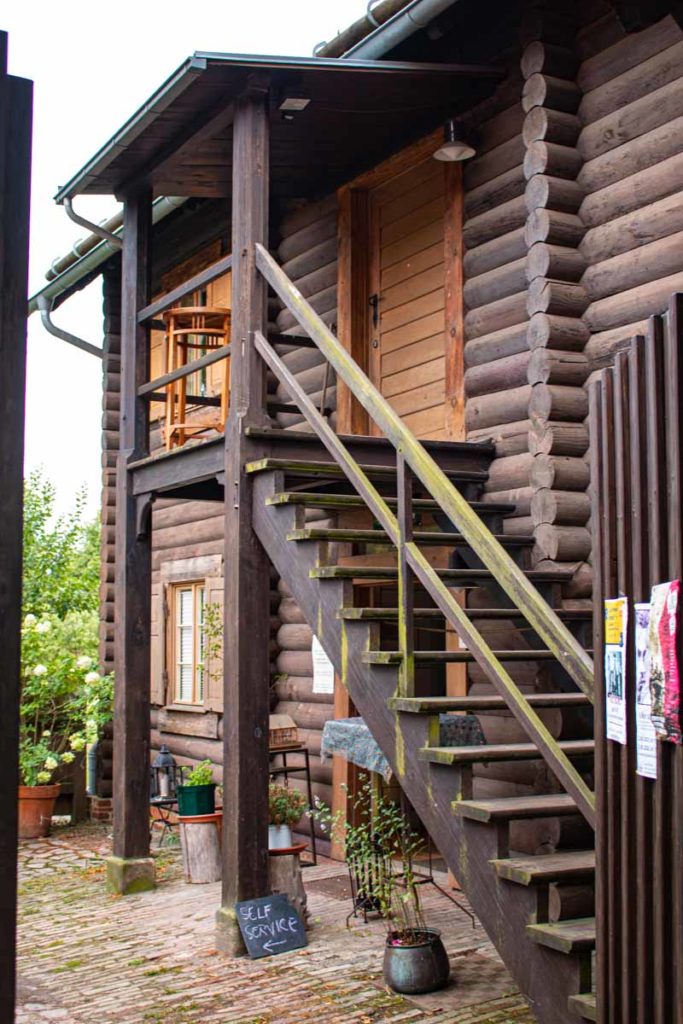

Russian Colony Alexandrowka
Due to the Second World War, it is easy to forget that Germans and Russians were once close friends. Especially due to the close kinship between the German and Russian ruling dynasties, there were good connections. So it comes as less of a surprise that Frederick William III had a Russian colony built in the middle of Potsdam between 1826 and 1827 in memory of his deceased friend Tsar Alexander I. It was mainly Russian musicians who lived here. Fruit was grown in the gardens. The city of Potsdam has therefore replanted old fruit varieties here. Some of them date back to the 12th century. And if you’re hungry, you can try real Russian food like pelmeni with a jug of kvass in the Alexandrowka Haus 1 restaurant.
Dragon House
Perhaps even more than the Chinese House, the Dragon House actually looks like China. The inspiration for it actually came from the Middle Kingdom, as it is modelled on the Ta Ho Pagoda in Canton, China. At the edges of the roof, 16 dragons watch over the building. Today it is used as a café where chamber music is often played.
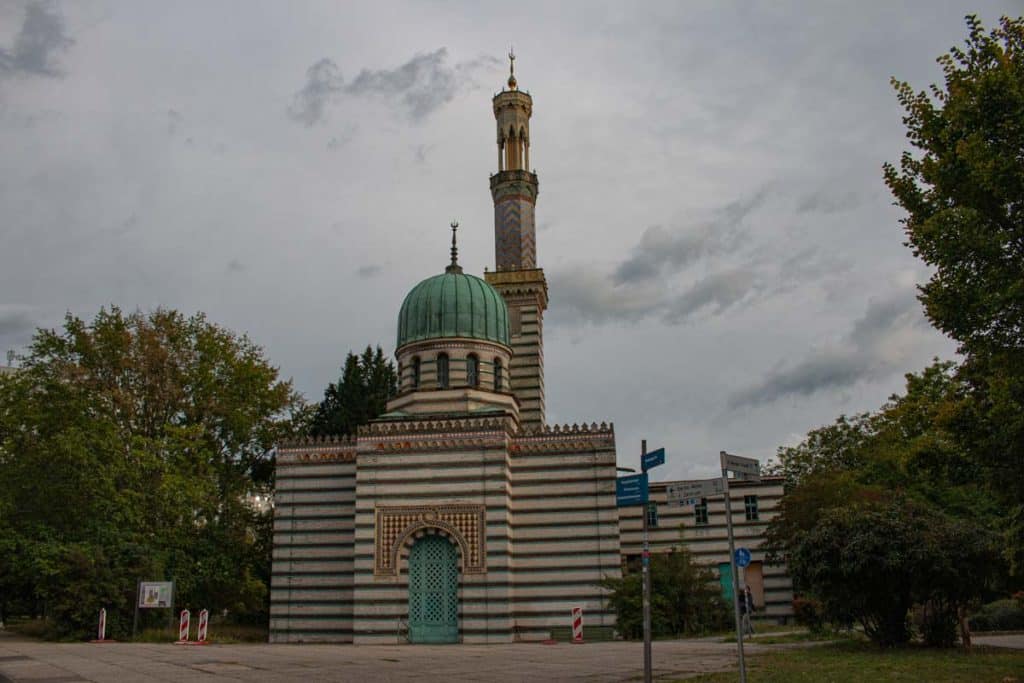
Steam Engine House
A small mosque stands directly on the shore of the Neustadt Havel Bay. Frederick William IV had it built here between 1841 and 1843. The building, also known as the Mosque of Potsdam, was intended to be visually appealing, as it could even be seen from Sanssouci Palace. However, the main purpose of the steam engine inside was to raise the fountain in Sanssouci Palace Park to an imposing height of 38 metres.
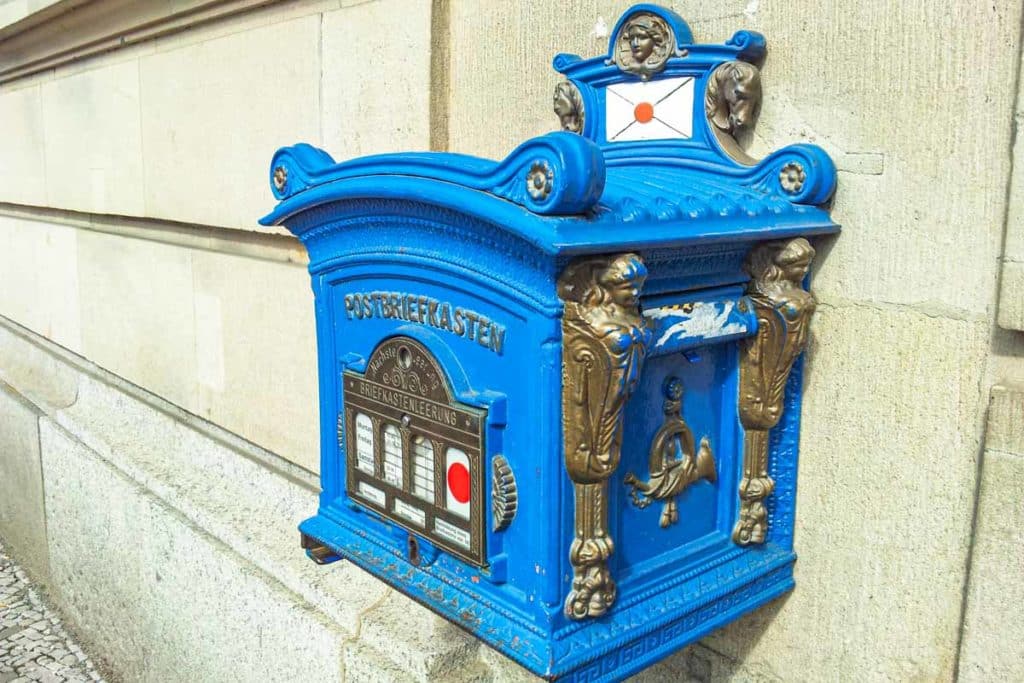
Potsdam – Where even sending postcards is a pleasure
In Potsdam, even sending postcards is an experience. Directly at the main post office there is one of the most beautiful letterboxes in East Germany. This one is also, you guessed it, Prussian blue! So take the opportunity to send a few postcards with pictures of the beautiful Potsdam sights to your loved ones and take a few fancy photos for Instagram at the same time!
Book recommendation
Trilingual (German, English, French) guide to the most beautiful places in the residential city.
No products found.
No products found.
No products found.
No products found.
East Germany has some really interesting Socialist Modernist architecture. This book lists some of the best.
No products found.
No products found.
This book talks about what happened to all the monuments and buildings that were significant for the development of the GDR.
No products found.


